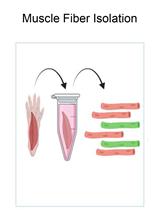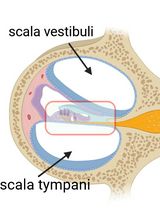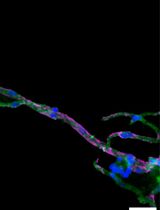- EN - English
- CN - 中文
Mandibular Explant Assay for Investigating Extrinsic Stimuli on Bone and Cartilage Development
研究骨及软骨外源刺激的下颌外植体实验
发布: 2017年12月05日第7卷第23期 DOI: 10.21769/BioProtoc.2641 浏览次数: 7485
评审: Alessandro DidonnaAnonymous reviewer(s)
Abstract
A major issue in developmental biology is to determine how embryonic tissues respond to molecular signals in a timely manner and given the position-restricted instructions during morphogenesis, of which Meckel’s cartilage is a classical example. The ex-vivo explant model is a practical and convenient system that allows investigation of bone and cartilage responses to specific stimuli under a controlled manner that closely mimics the in vivo conditions. In this protocol, the explant model was applied to test whether Meckel’s cartilage and surrounding tissues are responsive to the Endothelin1 (Edn1) signaling molecule and whether it would rescue the phenotype of genetic mutations. The system allows a high degree of manipulation in terms of the concentrations of exogenous compounds added to the explant, time points with regards to measuring mandibular development, and the method of application of exogenous molecules and teratogens.
Keywords: Ex-vivo mandibular explant (下颌的体外分离)Background
Craniofacial malformations are among the most frequent congenital birth defects in humans (Miettinen et al., 1999). Many of these malformations occur during facial morphogenesis, a complex multi-step process in which cranial neural crest cells migrate to pharyngeal arches to give rise to many facial structures (Jin et al., 2011).
Both variations within specific genes as well as gene-gene interactions can lead to craniofacial deformations. Mutations in IRF6, a gene that contributes to the formation of ectoderm and epithelium in the head and face, can result in cleft lip, cleft palate, and mandibular abnormalities. In comparison to IRF6, the TWIST1 gene regulates neural tube closure during embryonic development and cranial suture fusion during skull development. Mutations in TWIST1 can cause craniosynostosis, mandibular hypoplasia, and cleft palate (Fakhouri et al., 2017). Inhibition or alteration of IRF6 and TWIST1 expression can be done similar to the methods performed by Miettinen et al. (1999) with EGF receptors in order to examine their roles in craniofacial development. However, difficulties arise in in vivo experiments when the study begins to incorporate genetic interactions and rescue experiments of two or more allelic mutations. In our recent study, the genetic interaction between Irf6 and Twist1 causes severe mandible abnormality and cleft of the secondary palate in the mouse model (Fakhouri et al., 2017).
Various studies have used in vivo experiments to test for the expression of various genes involved in craniofacial development. The presence of TGF-β subtypes was studied by using an ex vivo culture model in a serumless, chemically defined medium during mandibular morphogenesis (Chai et al., 1994). Similarly, a study used Alcian blue staining of cultured mandible explants to examine Meckel’s cartilage during morphogenesis in Egfr-/- embryos (Miettinen et al., 1999). A combination of the methodologies from these studies, including an ex vivo mandibular explant described in this report, is useful to characterize the phenotype and signaling pathway in mammalian systems.
Materials and Reagents
- 60 mm TC-Treated center-well organ culture dish (Corning, Falcon®, catalog number: 353037 )
- Petri dish (Thermo Fisher Scientific, Thermo ScientificTM, catalog number: 130182 )
- Test tubes (15 and 50 ml) (Denville Scientific, catalog numbers: C1012 and C1062-P , respectively)
- Stainless steel grid (0.5 mm hole size) (Home Depot International, model: 3004107 , catalog number: 1001034564)
- Millipore type filters (0.8 µm pore size, 47 mm diameter) (Merck, catalog number: AAWP04700 )
- Sterile individually packaged pipettes (2, 5, and 10 ml) (Genesee Scientific, catalog numbers: 12-101 , 12-102 , 12-104C )
- E10.5-E11.5 murine embryos
- 70% ethanol
- 95% ethanol
- 6-Aminonicotinamide (Alfa Aesar, catalog number: L06692 )
- 2 mm-diameter agarose beads or Affi-Gel blue gel (Bio-Rad Laboratories, catalog number: 732-6712 )
- Endothelin1 peptide (Enzo Life Sciences, catalog number: ALX-155-001-PC01 )
- Thymol (Sigma-Aldrich, catalog number: T0501 )
- Sodium phosphate dibasic heptahydrate (Na2HPO4·7H2O) (Sigma-Aldrich, catalog number: S9390 )
- Sodium chloride (NaCl) (Sigma-Aldrich, catalog number: S7653 )
- Potassium chloride (KCl) (Fisher Scientific, catalog number: BP366 )
- Potassium phosphate monobasic (KH2PO4) (Fisher Scientific, catalog number: P286-1 )
- BGJb medium with L-glutamine (Thermo Fisher Scientific, GibcoTM, catalog number: 12591038 )
- Fetal bovine serum (FBS) (Sigma-Aldrich, catalog number: F0926 )
- Ascorbic acid (Fisher Scientific, catalog number: S25184 )
- Penicillin-streptomycin 100x (Caisson Laboratories, catalog number: PSL01-100ML )
- MEM non-essential amino acid solution 100x (Sigma-Aldrich, catalog number: M7145 )
- Glacial acetic acid (Fisher Scientific, catalog number: S25118A )
- Potassium hydroxide (KOH) (Sigma-Aldrich, catalog number: P1767 )
- Alcian Blue 8GX (National Diagnostics, catalog number: HS-504 )
- Alizarin Red S (Acros Organics, catalog number: 400480250 )
- Glycerol (Thermo Fisher Scientific, Thermo ScientificTM, catalog number: 17904 )
- Nuclear fast red (Acros Organics, catalog number: 211980050 )
- 10x phosphate-buffered saline (PBS) (see Recipes)
- Mandibular explant media (see Recipes)
- 3% acetic acid solution (see Recipes)
- 2% KOH solution (see Recipes)
- Alcian blue solution pH 2.5 (see Recipes)
- Alizarin red solution (see Recipes)
- 1% KOH / 20% glycerol solution (see Recipes)
Equipment
- Surgical scissors (World Precision Instruments, catalog number: 501225 )
- Sterile cell culture hood (NuAire, model: NU-545 )
- Stereomicroscope (Nikon Instruments, model: SMZ800N )
- Forceps (World Precision Instruments, catalog number: 15915 )
- Autoflow IR Direct Heat CO2 incubator (NuAire, model: NU-5510 )
- Ceramic hot plate (VWR, catalog number: 97042-602 )
- Pipette pump (Thermo Fisher Scientific, Thermo ScientificTM, catalog number: 9511 )
- Autoclave (Future Health Concepts, Primus, catalog number: PRPSS8-A )
Software
- NIS Elements AR software (Nikon Instruments) used for the stereomicroscope
Procedure
文章信息
版权信息
© 2017 The Authors; exclusive licensee Bio-protocol LLC.
如何引用
Jiang, J., Bertol, J. W. and Fakhouri, W. D. (2017). Mandibular Explant Assay for Investigating Extrinsic Stimuli on Bone and Cartilage Development. Bio-protocol 7(23): e2641. DOI: 10.21769/BioProtoc.2641.
分类
发育生物学 > 细胞生长和命运决定 > 软骨
神经科学 > 发育 > 外植体培养
细胞生物学 > 组织分析 > 组织分离
您对这篇实验方法有问题吗?
在此处发布您的问题,我们将邀请本文作者来回答。同时,我们会将您的问题发布到Bio-protocol Exchange,以便寻求社区成员的帮助。
提问指南
+ 问题描述
写下详细的问题描述,包括所有有助于他人回答您问题的信息(例如实验过程、条件和相关图像等)。
Share
Bluesky
X
Copy link














